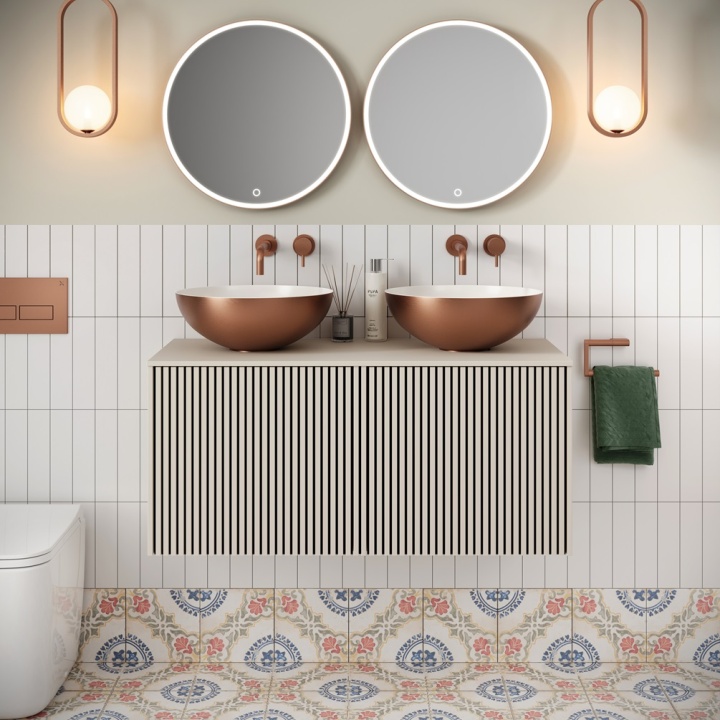It is safe to say that we have high expectations of our bathrooms. Not only do we expect them to prepare us for the day ahead, provide us with somewhere to escape to throughout the day and to relax as we start our evening, we expect our bathrooms to be as up to date and on trend as any other room in our home. While it might be easy to refresh your living room or your kitchen with new furnishings or the latest gadget, the thought of working around all that indoor plumbing can discourage even the most conscientious amateur designer to the extent that their bathroom becomes tired and lifeless.
If you are worried that your bathroom might be getting left behind, but are even more terrified by the ceaseless tide of interior trends, then perhaps committing to a modern style bathroom would be your best cause of action. “Hang on,” we hear you cry, “does that mean that my current bathroom is not modern? What do you mean by a ‘modern style’ bathroom?”
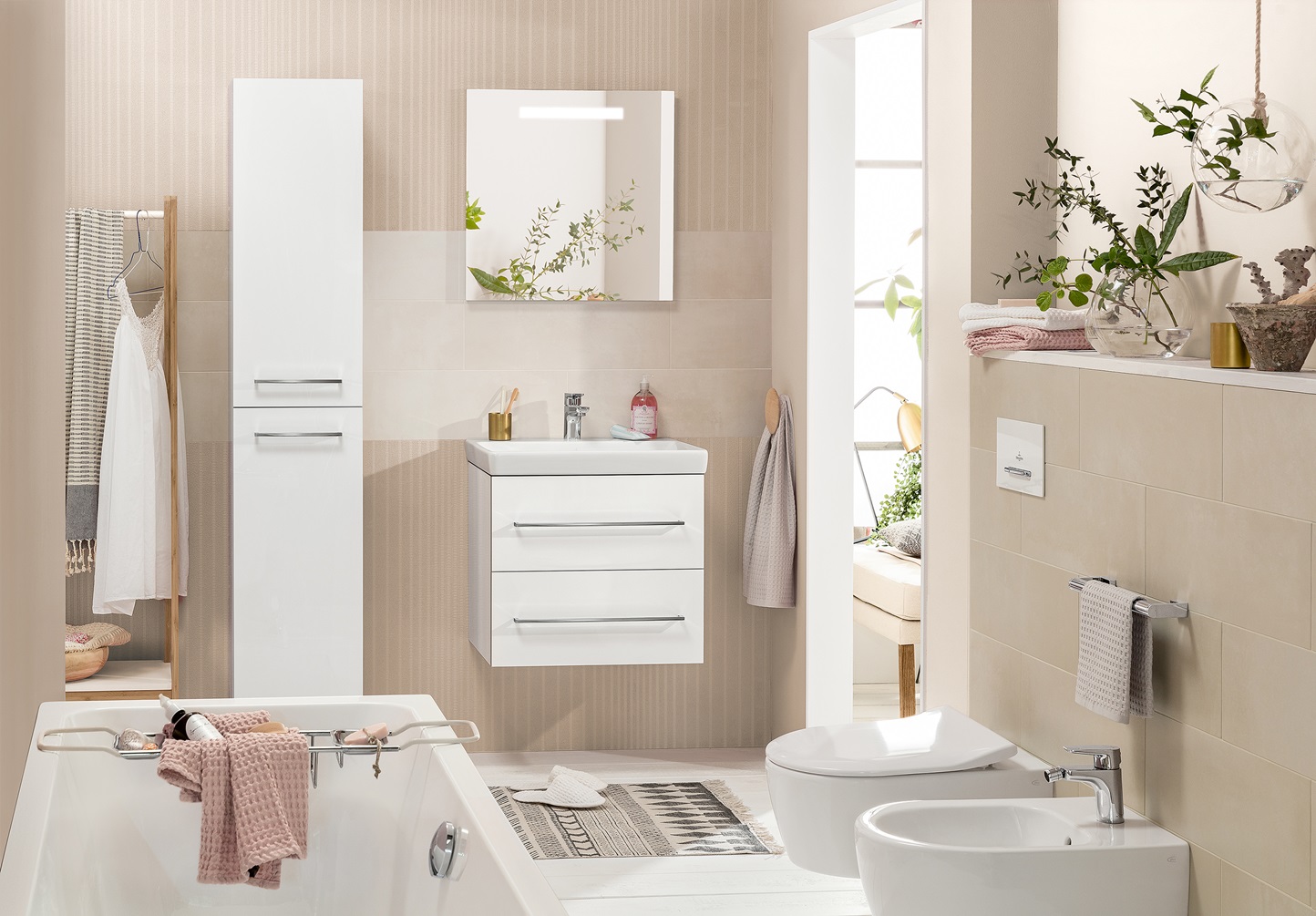
- What is the Difference Between Modern, Contemporary, and Futuristic Bathrooms?
- What is a Modern Bathroom and What Periods Are Classified as Modern?
- 1920s: Bauhaus and Art Deco
- 1930s: Hollywood Regency
- 1940s: Scandinavian
- 1950s: Mid-Century Modern
- 1960s: Minimalism
- 1970s: Industrial
- 1980s: Maximalism
- 1990s – Present: Modern Rustic
- What is Contemporary Style?
- How Do You Modernise an Old Bathroom?
- What Features Does A Modern Bathroom Have?
- What Colours Work Well in a Modern Bathroom?
- What Sort of Technology Do Modern Bathrooms Have?
- How Much Will a Modern Bathroom Cost and Can You Do It on a Budget?
What is the Difference Between Modern, Contemporary, and Futuristic Bathrooms?
You would be forgiven for assuming that ‘modern’ and ‘contemporary’ bathrooms are one and the same. Searching either of these terms on the internet produces very similar results, however these articles tend to offer examples of contemporary designs, whereas the modern style is something else entirely. In the same way that scholars coined the term ‘modernism’ to describe a period in art and literature, the modern style refers to the period of interior design that began in the 1920s and started to wane in the 1990s. Contemporary style, on the other hand, refers to current trends in interior design that change year by year.
To make matters more confusing, there is a third style of design known as futurism, which ironically predates the modern style by a couple of decades. Starting in Italy in the early twentieth century, futurism began as an artistic and social movement that rejected anything that was not entirely new, be it an innovative piece of technology or radical ideology. At the time, futurism embraced abstract imagery with an industrial edge, but today the futuristic style leans into the chromatic and angular aesthetic popularised by science fiction, while still taking advantage of modern gadgetry such as smart devices.
While the latest technology is present in modern and contemporary spaces, the design of modern and contemporary interiors are much more eclectic than futuristic interiors. Unlike previous periods of interior design, which spanned decades if not centuries, the modern period marked multiple changes and evolutions throughout the twentieth century, giving birth to numerous distinct styles that are still replicated in contemporary design today. It is for this reason that modern and contemporary design share so many core principles. However, while contemporary interiors are more fluid in the application of these principles, modern style interiors adherence more strictly to the rules and ideologies that distinguished them from the other styles that emerged during the twentieth century.
What is a Modern Bathroom and What Periods Are Classified as Modern?
Now that we have clarified what we mean by the modern style, it is time to delve deeper into the modern period of interior design and explore how it developed. This section will guide you through the twentieth century, introducing you to the styles that defined each decade as well as the characteristics that defined each style. It is important to mention that, while many of these styles were popular for multiple decades and influenced styles of the future, for the sake of simplicity we have assigned each style to the decade in which it was most prominent.
1920s: Bauhaus and Art Deco
Often credited as the most influential design movement of the twentieth century, the Bauhaus school of design was established by German architect Walter Gropius six months after the end of World War I. Inspired by the concept of Gesamtkunstwerk, which translates to “total work of art”, the underlying principle of the Bauhaus style was that the form of an object should be combined with its function. This marked a severe departure from traditional design, favouring the purposeful placement of objects over empty ornamentation, such that the attractiveness of a space was as a result of its composition rather than superfluous furnishings.
Mass production was another core value of the Bauhaus style, as much for financial as for philosophical reasons. This saw traditional materials such as wood, brick and stone being replaced with industrial materials, like concrete, steel and glass. This similarly affected the colour palette of the Bauhaus style, which was predominantly stark and neutral with sparing yet bold pops of primary colours, red, blue and yellow. Perhaps the most notable characteristic of the Bauhaus style is the focus on achieving clean lines in their designs, often resulting in asymmetrical yet balanced compositions.
Meanwhile, across the border in France, another artistic movement was turning its back on traditional sensibilities in favour of abstract forms. Soaring in popularity following its debut at the Exposition Internationale in 1920, the Art Deco movement adapted the intricate natural motifs of its predecessor, Art Nouveau, into sleek geometric patterns that better reflected the growing mechanisation of the age.
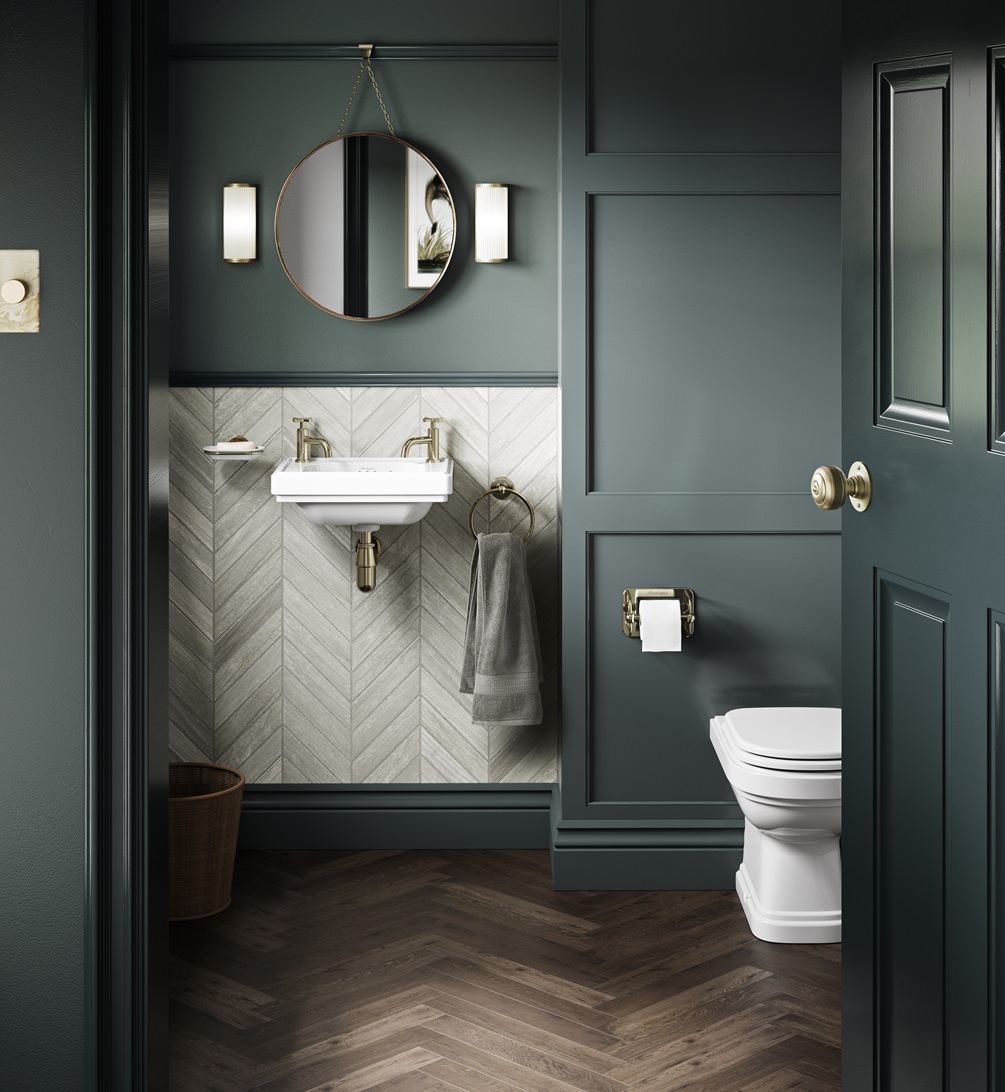
Sunbursts, chevrons and trapezoids featured prominently in Art Deco, as they facilitated the same mass production adopted by the Bauhaus style, while the ornamentation they lend to the style distinguishes it from its German neighbour. Its materials and colour palette provide another point of contrast; mirrored surfaces, colourful glass and polished wood appeared alongside a roster of industrial metals, while combinations of vivid colours with softer nudes covered everything from the walls to the furniture.
1930s: Hollywood Regency
While Art Deco was incredibly popular in America and eventually forged its own identity in the form of Streamline Moderne, another movement was emerging out of California that was inspired by sources closer to home. Born out of the Golden Age of cinema, the Hollywood Regency style sought to recreate the opulence of movie sets in the homes of the stars that appeared alongside them, on the silver screen.
Taking inspiration from Baroque and Rococo, which embellished the palaces of the French aristocracy in the eighteenth century, while incorporating elements from traditional Greek, Egyptian and Asian interiors, the Hollywood Regency style was considerably more glamorous and elaborate than the streamlined styles coming out of Europe. Slipper chairs, armchairs and skirted sofas were upholstered in velvet and satin, but furniture was kept smaller in scale so as not to distract from the star of the Hollywood Regency style: an abundance of ornaments. Animal fur rugs and throws, statement light fixtures and gold plated busts practically littered the Hollywood Regency home, set against a backdrop of vividly coloured and contrasting patterned wallpapers.
1940s: Scandinavian
Following the decline of colonialism and aristocratic powers in Norway, Denmark and Sweden subsequent to the end of World War II, it became easier for the Scandinavian public to attain the wealth and luxuries that had previously been reserved for the elites. As a way of celebrating this social development, as well as rejecting the fashions imposed by the aristocracy, a series of design conferences were held across Scandinavia which resulted in the formation of the Scandinavian style.
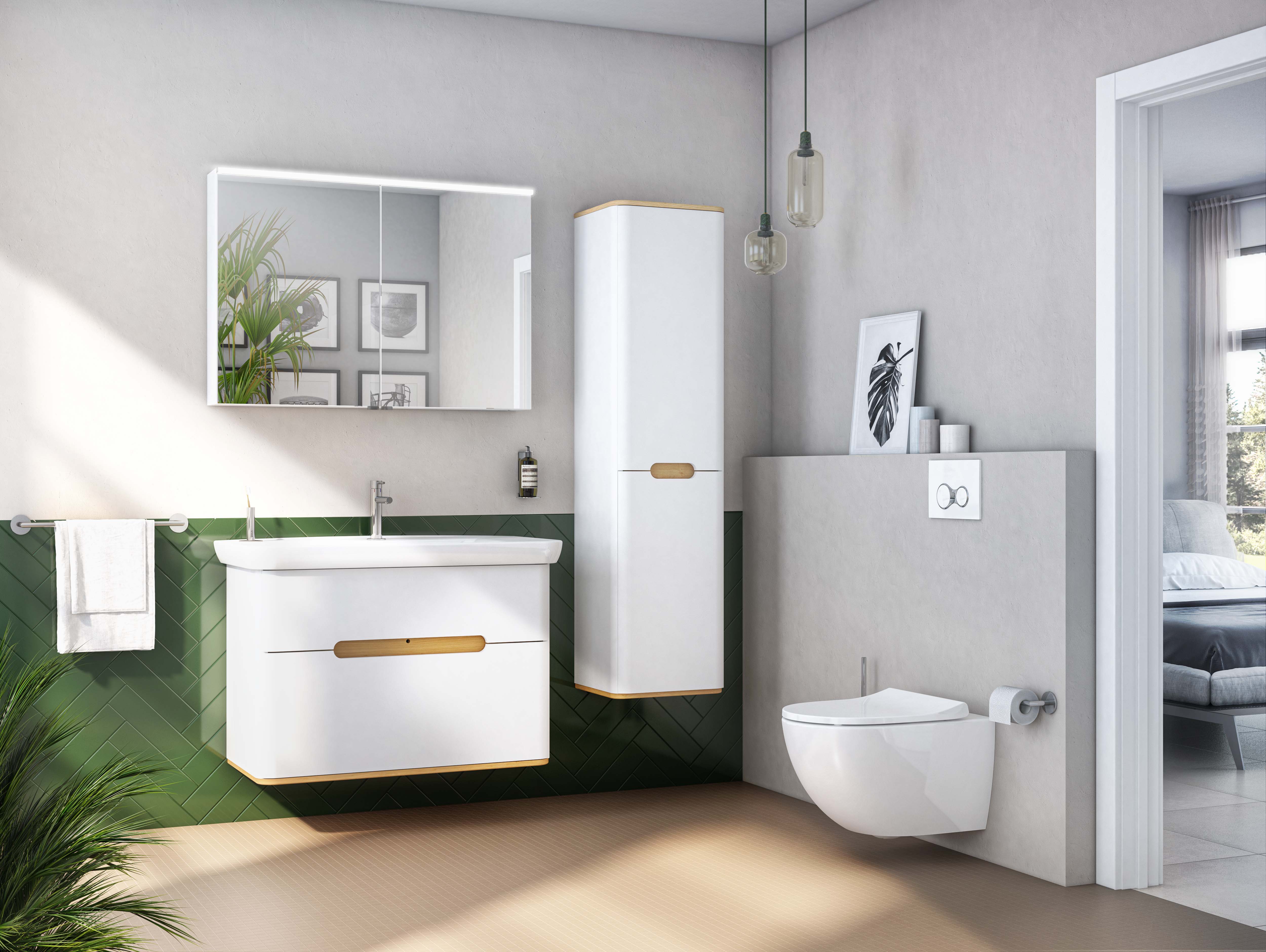
Much like the Bauhaus school of design, the Scandinavian style championed clean lines in the composition of their spaces, as well as assigning purpose to the placement of every object in the room to create an uncluttered environment. What distinguishes the Scandinavian design philosophy from Bauhaus, however, is its acknowledgment of its Northern European heritage and incorporation of hygge, which roughly translates to “cosiness” and relates to the practice of togetherness and relaxation in Scandinavian culture.
This was achieved by bringing elements from the outside world into the interior space: white walls and floor reflected sunlight around the space; natural materials such as wood, stone and wool brought warmth to the space without disrupting its clean composition. Neutral colours were understandably inherent to the Scandinavian style, with organic hues such as shades of green and tan providing an accent where appropriate.
1950s: Mid-Century Modern
While the Scandinavian style gained traction in the America during the 1950s following its feature in the popular design magazine House Beautiful, the movement that defined the decade was the appropriately named Mid-Century Modern style. Advancements in technology and the timber industry boom that followed the second world war resulted in numerous manufacturers mass producing wooden furniture, which was as functional and aesthetic as it was widely affordable. New materials, including plywood and fibreglass, allowed designers to make their products sleeker without compromising on its durability, which is why the furniture of the period often featured fine, tapered legs.
Whereas the composition of the Mid-Century Modern style remained clean in keeping with European trends, its colour palette was more eclectic. Soft warm tones, such as orange, green and mustard yellow were paired with cooler shades, like greys, teals and dusky blues. Geometric patterns similarly added some dynamism to Mid-Century Modern spaces, usually reserved for wallpapers that could serve as a backdrop to its streamlined pieces of furniture.
1960s: Minimalism
Ahead of the outbreak of World War II, several German designers emigrated to America so that they could continue their careers out from underneath the Nazi regime. Among these designers was Ludwig Mies van der Rohe, the acting director of the Bauhaus school in Berlin at the time of its closure in 1933, who many cite as the first leader of the Minimalist movement. Influenced by the uncluttered aesthetic of Scandinavian design, as well as the tranquil simplicity of Japanese Zen Gardens, the Minimalist style sought to maximise space by stripping away anything decorative or unnecessary until only the essential components remained.
More austere than its Scandinavian influences, the colour palette of the Minimalist style was almost exclusively monochromatic, although natural shades were permitted as long as they were true to the materials used in the space. Storage features prominently in Minimalist spaces, providing somewhere for any small items to be concealed when not in use. Any visible objects were placed logically with the space, reflecting the purpose of their inclusion while complementing the simple geometry of the Minimalist space, which favoured right-angles and occasionally organic shapes.
1970s: Industrial
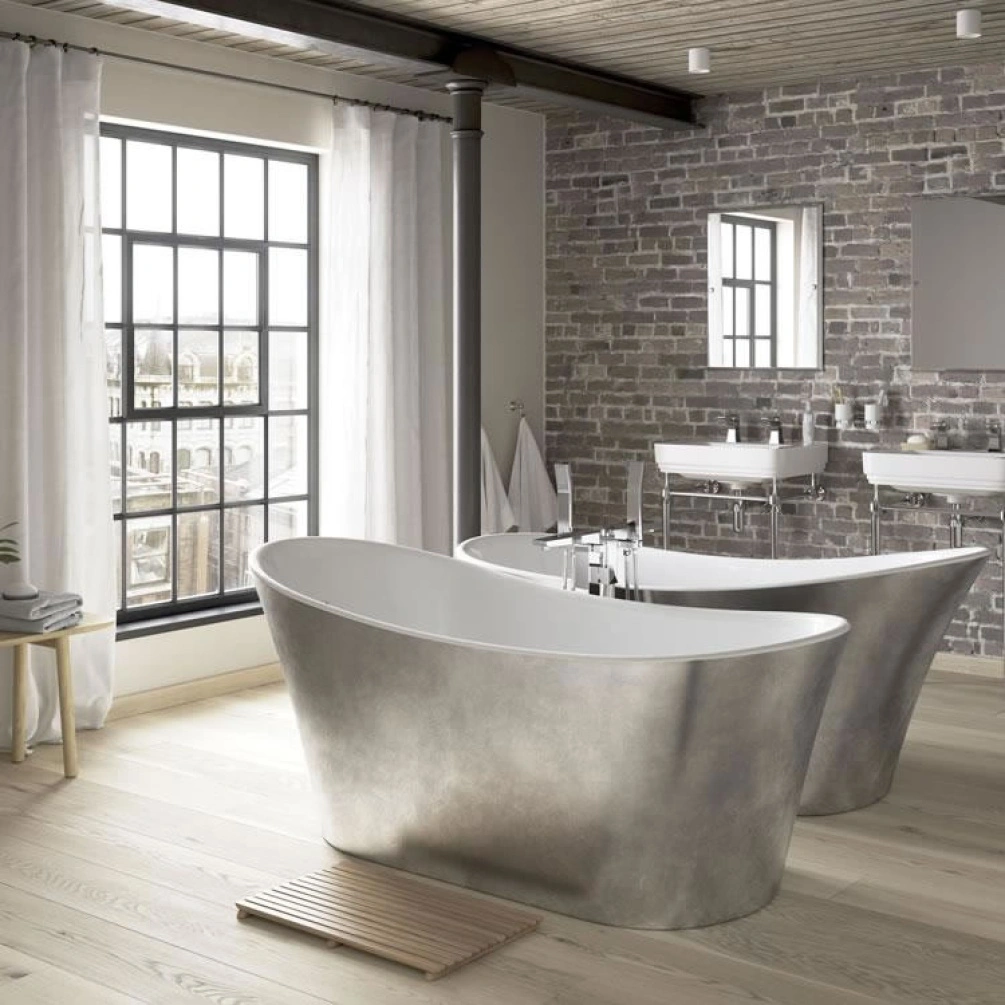
As the nature of manufacturing changed in line with globalisation, numerous factories and warehouses in London, Berlin and New York were abandoned as production was displaced to foreign countries. Rather than demolish these technical buildings to make room for more conventional housing, designers embraced the empty structures alongside contemporary trends and developed the Industrial style.
Combining the Minimalist principle of maximising space with the unconventional proportions that disused buildings provided for newly adapted domestic spaces, the Industrial style placed an emphasis on openness while incorporating the qualities that were inherent to the buildings. Brick walls, concrete floors, wooden frameworks, pipework and even air ducts were left on display, while steel framed Crittall windows were salvaged or installed to augment the airiness of the Industrial space. These harsh features were softened by the inclusion of extravagant furniture, soft furnishings such as rugs and even striking pieces of artwork.
While natural light would have been in abundance, the installation of hanging bulbs with exposed filaments brought additional warmth into these harsher interiors while remaining true to the Industrial setting. Natural textures, such as leather and wood, were similarly used to balance the cold artificiality of these abandoned buildings.
1980s: Maximalism
While most artistic movements throughout the twentieth century strived to weave aesthetic and function together in their designs, an Italian designer by the name of Ettore Scottsass decided to attempt the opposite. Assuming the name of the Memphis Group, Scottsass and his new design collective hosted their first exhibition in 1981, showcasing an abstract assortment of furnishings that marked the conception of the Maximalist style. Drawing inspiration from the glamour of Hollywood Regency and the saturated colour of Pop Art, the Maximalist style is characterised by clashing patterns, colour palettes and dense ornamentation, seemingly in direct opposition to the order and rationale of Minimalism and the Scandinavian style.
From an outside perspective, the Maximalist style appears random and haphazard, however these spaces would take a considerable amount of time to construct. Through a process known as layering, the Maximalist designer gradually and organically introduces more elements into their design, intentionally mismatching sizes of furniture, misaligning various geometric prints such as stripes and terrazzo, conflicting each new addition with all those that came before it to achieve a thoroughly eclectic space. Numerous contrasting materials were similarly used in the curation of the Maximalist space, often mixing more luxurious substances such as marble with artificial and industrial materials, like coloured glass and laminate.
1990s – Present: Modern Rustic
As the twentieth century reaches its end, the final style of the modern period remarkably sought to replicate the Rustic style from the late nineteenth century. Starting in the 1990s as a small scale architectural movement before exploding in popularity in the 2000s following the introduction of the “Rough Luxe” range of organic furnishings at Anthropologie, the Modern Rustic style employs the same principles as most modern design schools while creating a more ‘lived in’ feel to its spaces.
Natural materials are at the forefront of Modern Rustic design, with furniture primarily made from untreated and even worn wood to create an aged and antique feel, even to new furnishings. Much like the Industrial style, wooden beams and even stripped back floorboards are left exposed, but walls should be painted in neutral colours to lend the Modern Rustic space some warmth. Clean lines should still be present, however this style does allow the designer to indulge in more ornamentation, predominantly vintage items for added authenticity as well as natural fabrics, like wool and linens, for comfort and to complete the rustic feel. Check out examples in our guide to brown bathroom ideas and using walnut in bathrooms.
What is Contemporary Style?
With our whistle stop tour of modern styles out of the way, we can finally introduce you to the trends you can expect to see in the bathrooms of today. As stated in our section on the difference between modern and contemporary styles, our understanding of what is contemporary changes each year, so rather than go into the specifics of what is popular this very second, this section will provide more of a generalised view of contemporary trends.
The most distinctive element of the contemporary style, which appears in most forms of modern design, is its adherence to clean lines in the composition of the space. These do not necessarily need to be straight lines, nor do they need to be horizontal or vertical, but the lines need to be visible and consistent across the space. Celebrating structural elements is equally crucial in contemporary design. Whether the room has ornate wooden beams or an air duct hanging from its ceiling, broken brickwork or exposed pipework running up the walls, these elements provide texture and inform the design of the rest of the space.
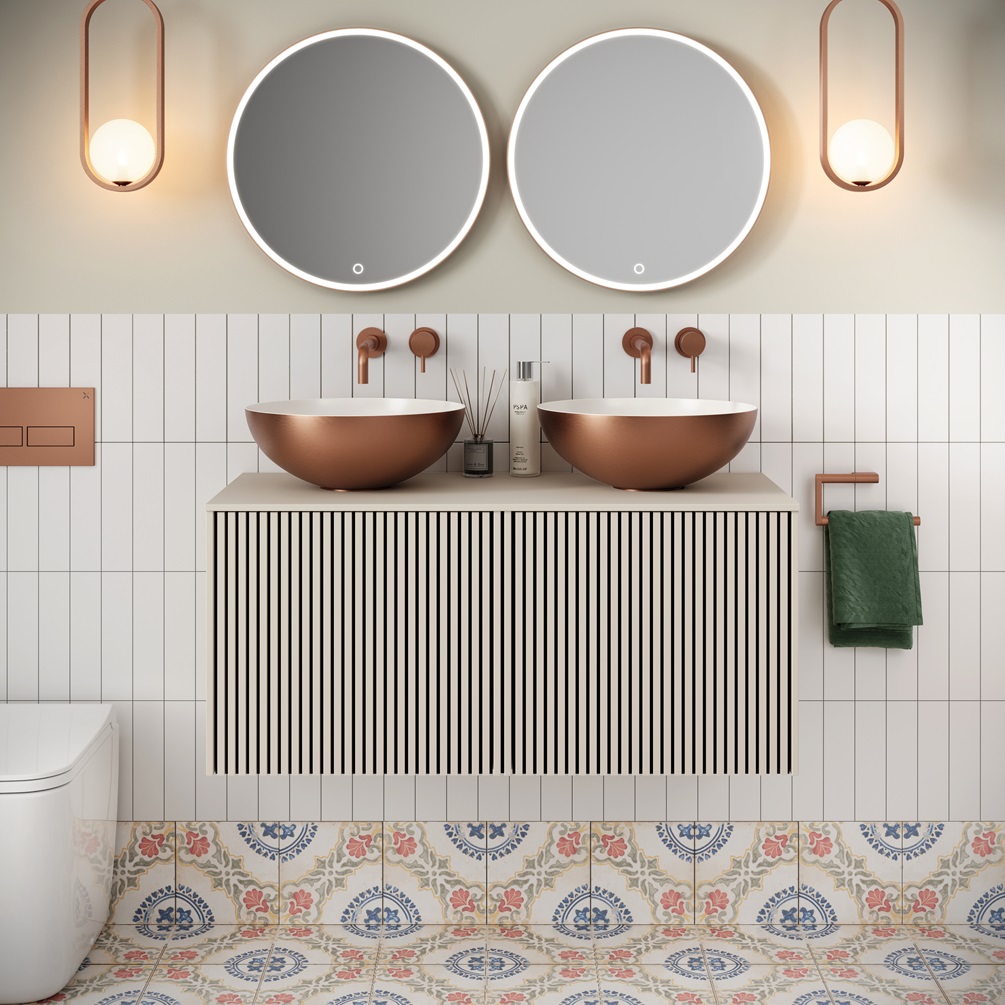
In recent years, sustainability has become increasingly important in the fashion industry and interior design is no exception. Ensuring your fixtures are made from sustainable materials, or purchasing vintage products that can be layered into or ‘up-cycled’ to suit you modern space, are not only popular trends but responsible practices that can reduce our negative impact on the environment.
How Do You Modernise an Old Bathroom?
If your head has stopped spinning from racing through over a hundred years of interior design, then you might be wondering how you would emulate a modern style in your own bathroom. Before you begin throwing away all of your ornaments or buying loads of geometric wallpaper, the best place to start when planning a modern style bathroom is with the space itself.
For many of the design schools from the modern period, the architecture of the space was as important as the objects furnishing it, so for an effective emulation of any of these styles, figure out what your bathroom has to offer and build on your design from there. Does it draw in lots of light and you like the idea of some Scandinavian comfort while you soak, or would it benefit from an audacious light fixture and some Rococo embellishments that would evoke the Hollywood Golden Age? Perhaps it has some stripped back bathroom flooring, crying out from some Modern Rustic touches, or do you think your high ceilings could work alongisde some other Industrial details?
Once you have determined what your space can offer to your design, then you can begin to assemble all the materials you need to modernise your bathroom.
What Features Does A Modern Bathroom Have?
While it is easy enough to point out a chair and identify which principles of modern design it adheres to, trying to match a new bath or a basin in isolation to its appropriate style might prove more difficult. Strictly speaking there are no specific bathroom fittings for each modern style, however there is similarly no one type of fixture that would be suited to every style from the modern period.
With that in mind, in this section we will offer suggestions for bathroom fittings that would complement either end of the interior design spectrum: streamlined designs that reflect the principles of Bauhaus, Scandinavian and Minimalist, followed by ornamental fixtures that would be more suited to Art Deco, Hollywood Regency and Maximalism.
Modern Style Baths
For a seamlessly integrated modern bath that establishes clean lines in your space, an inset bathtub is an ideal fixture for any Minimalist styled bathroom that provides an unparalleled bathing experience. While inset, or drop-in, tubs tend to be cheaper than freestanding baths, the nature of their installation takes up more space in the bathroom and makes them a greater commitment for the homeowner. If your space is limited, or you are unsure about permanently building your bath into the space, then a freestanding square tub offers a similar bathing experience while still adhering to the clean lines principle.
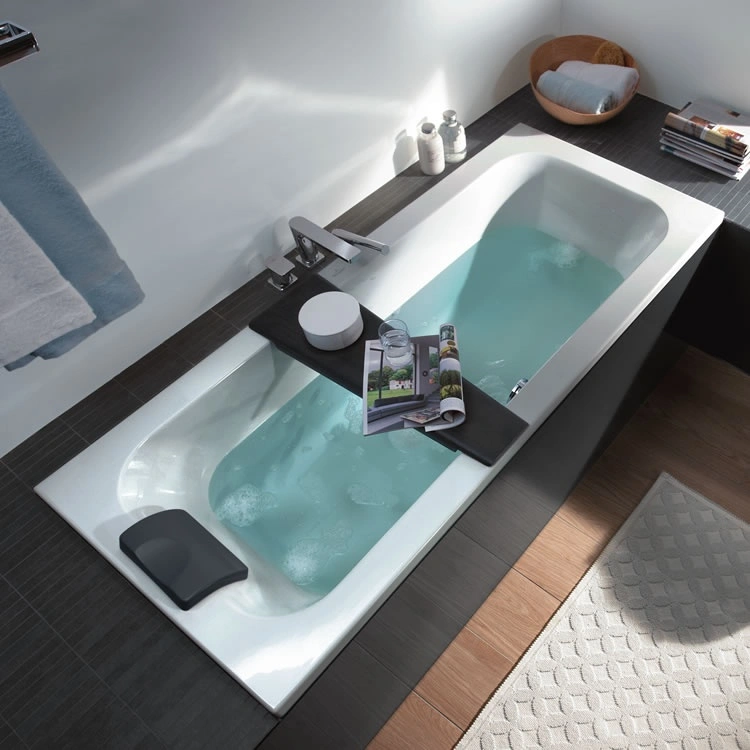
On the other end of the spectrum, nothing is more iconic than a freestanding bath with cast iron claw feet. Leaning into traditional designs, such as the single ended roll top bath that defined the Victorian bathroom, or the double ended bateau that was popular among the wealthiest member of nineteenth century French society, presents an excellent opportunity for vintage ornamentation. For a truly Maximalist feel, choose a bold colour for the outside of the bathtub and contrast it against some feature wallpaper.
Modern Style Showers
Walk in shower enclosures are becoming increasingly popular and their streamlined design is perfectly suited to the principles of the Minimalist style. Framing the glass screen in matt black should punctuate the clean lines of the enclosure, which when paired with a wall mounted shower system, with concealed pipework and similarly finished in matt black, will accentuate the purposeful placement of the shower enclosure within your space.
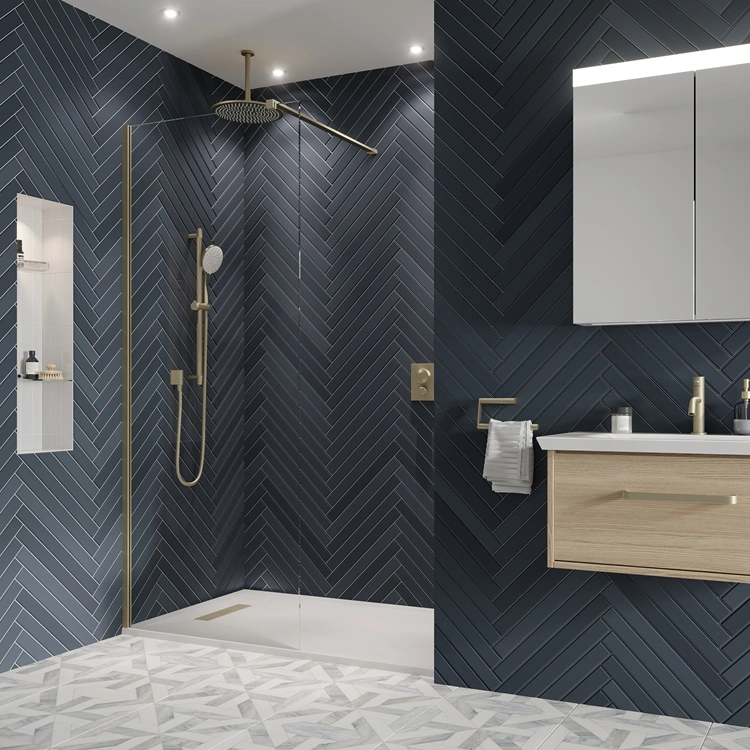
For an ornate alternative, we should look again to the trends set by Victorian designers and have as much pipework on display as possible. External pipework connecting the valves to the wall mounted shower head, alongside a slide rail with detachable hand shower, should transform your shower system into a spectacular centrepiece. This could either be housed inside an elaborately tiled shower enclosure, or if your space is limited, install it above your bath in addition to a patterned shower curtain.
Modern Style Basin and Taps
While they may seem synonymous with schools and public toilets, an integrated trough style basin that has been made to measure would slot seamlessly into your Minimalist bathroom, while creating yet another clean line across the space. If that seems slightly too utilitarian for your domestic interior, then wall mounted double basins would make an excellent compromise, achieving the same streamlined form while accommodating multiple handwashers at any given time for maximum functionality. Whichever style of basin you choose, it should be paired with angular basin mixer taps, finished in matt black to match the shower system.
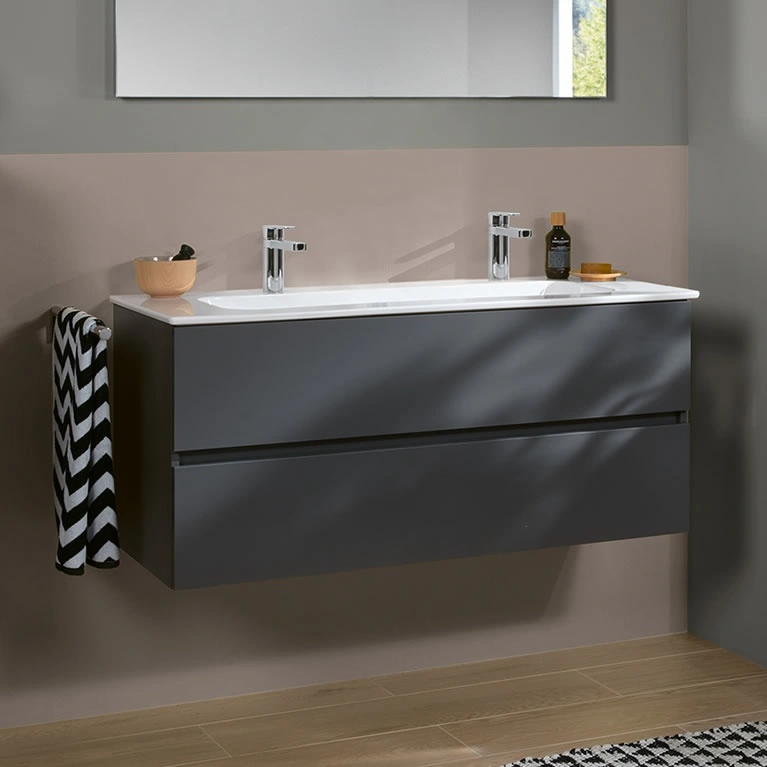
In keeping with our description of a Maximalist bathtub, coloured sanitaryware should be at the forefront of your mind. For the greatest impact, cylindrical floor standing basins are not only eye catching but afford you the opportunity to pair your basin with wall mounted taps, ideally with a curvaceous downward facing spouts. Alternatively, more traditional pedestal basins with gold or antique brassware would lend some vintage charm and would provide the perfect contrast for a backsplash of geometric tiles.
Modern Style Furniture
Practical and essentially minimal, built in storage should allow you to keep your bathroom totally uncluttered without having to sacrifice too many of your products. Ideally any furniture within the space should be made to measure, such that it can fit seamlessly and purposefully in its place. Unfinished wood, while uncommon for bathroom vanity units, would also provide some texture and warmth to your space.
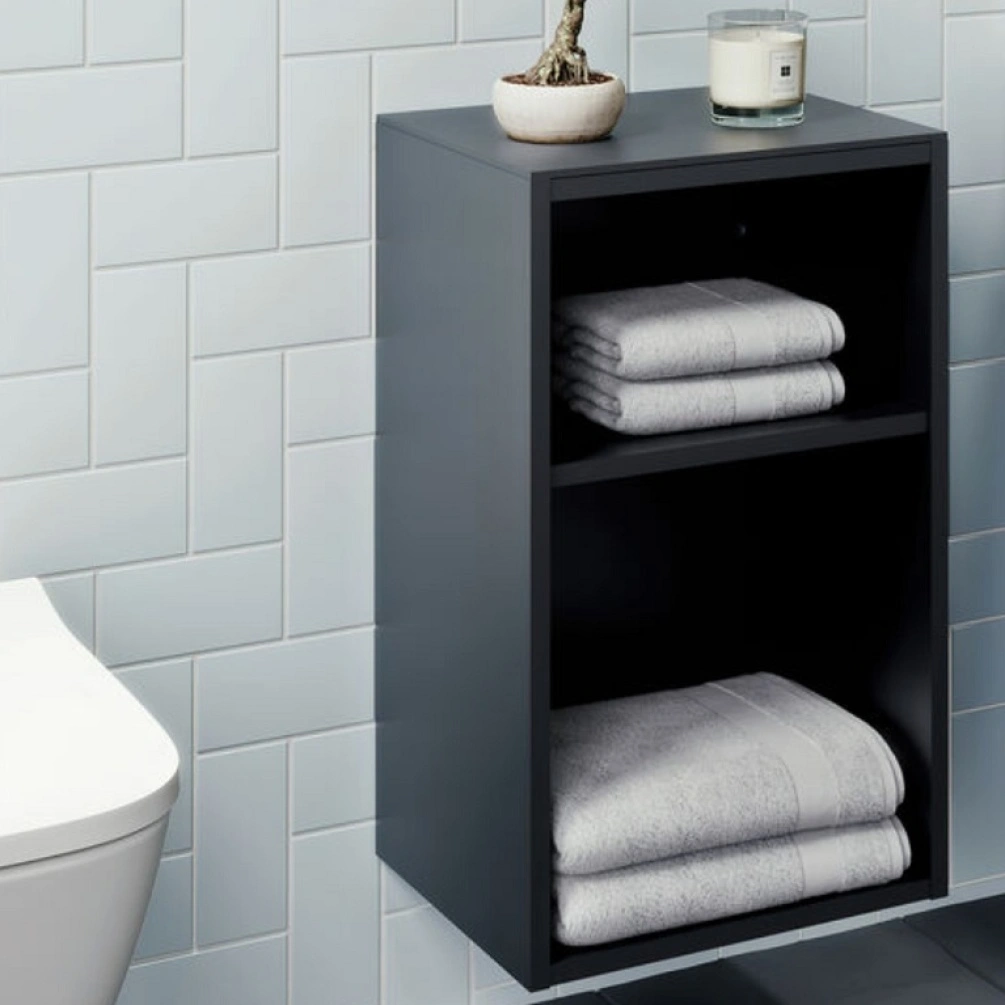
Furniture, or perhaps furnishings, are undoubtedly the most crucial aspect of the Maximalist space and their abundant variation is vital to the success of the style. Open shelving is ideal for more modestly sized bathrooms, as it maximises the surface area on which ornaments can be displayed, while traditional furniture can always offer a point of contrast for any of your contemporary fittings. Soft furnishing, such as bath mats and towels, should be as much a part of your composition as for your comfort, while hanging or potted plants will accent your Maximalist space with some much needed freshness.
What Colours Work Well in a Modern Bathroom?
Similar to the previous section, your chosen colour palette should be dictated by whichever modern style you have decided best utilises the architecture of your bathroom. We have made reference to colour throughout our earlier section summarising of the styles that defined each decade of the modern period, but as in the previous section, this section will give you an idea of the palettes and textures that lend themselves to interiors at the Minimalist and Maximalist ends of the design spectrum.
Neutral colours are indicative of the Minimal style, with whites and greys covering most surfaces and objects in the room. Natural hues, such as the browns and beiges we associate with wood and leather, are classic choices for adding warmth to the space, whereas softer tones like blues, lavenders and even muted pinks have a calming quality that is ideal for the modern style bathroom.
While saturated colours are the obvious choice for the Maximalist space, appearing in stark contrast across numerous geometric patterns and prints, strategic blocks of black can create an immense impact, especially when contrast against rich textures like marble. Creating conflict through colours and textures is crucial to the Maximalist style, however it usually helps to have a hero colour in the back of your mind throughout the layering process to ensure that you can maintain some kind of eclectic continuity.
What Sort of Technology Do Modern Bathrooms Have?
Whatever the time period and whatever the design philosophy, embracing the latest technology was consistently an essential component of the modern style. While this historically influenced the types of materials that appeared in modern designs, in recent years there have been several innovations that are specific to the bathroom, most notably the smart devices that were referenced in our discussion of futurism. This section will provide a few examples of the most recent advancements in bathroom technology, but be aware that not all of these smart devices will necessarily be suited with your chosen style of modern interior.
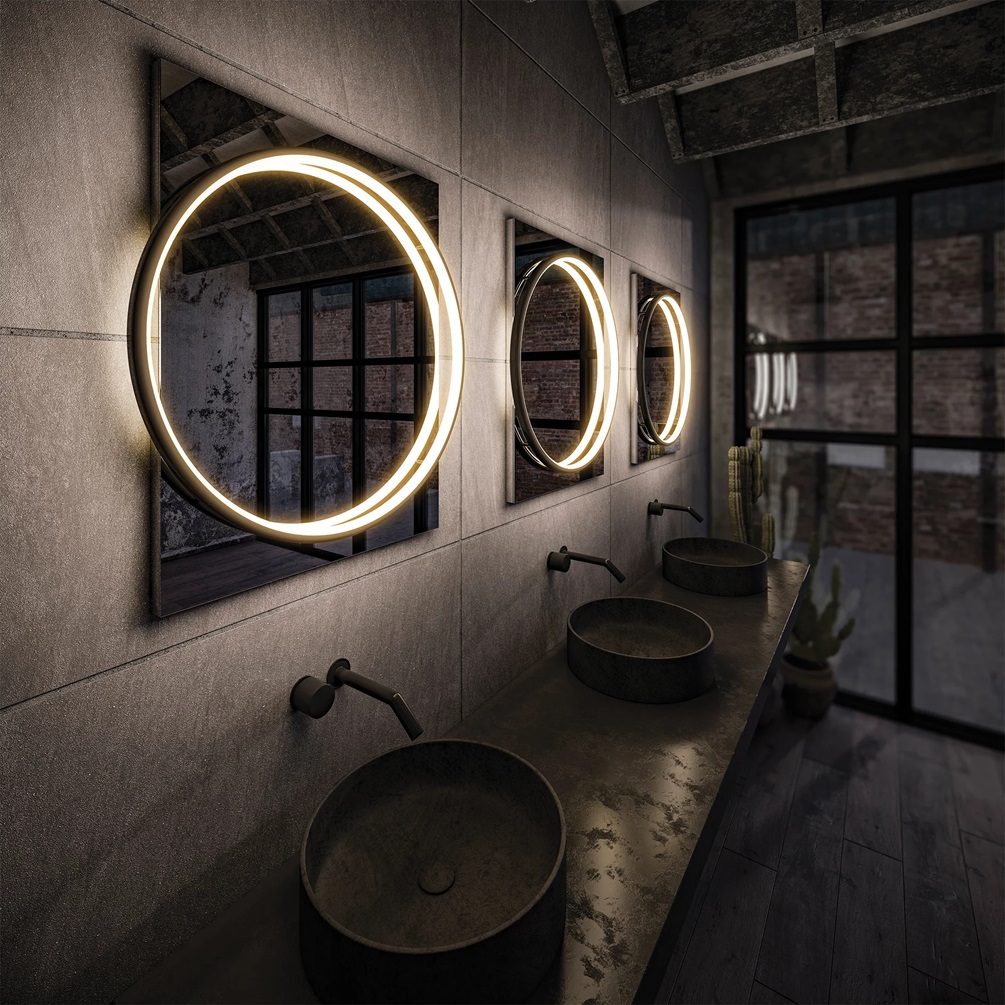
In much the same way that homeowners are increasingly controlling everything from their televisions, sound systems and even their lights through their mobile phones and other smart devices, various bathroom fixtures are now compatible with smart technology. Perhaps the most widespread example is the interactive LED mirror, the most advanced of which have their own built in display that can tell the time, show news updates, weather forecasts, traffic reports and even answer questions through their Bluetooth speakers. Smart showers are also increasing in popularity, as they can be programmed to control the flow rate, the duration of the shower and even increase the water temperature ahead of time, such that you have warm water the moment you steam under the shower head.
Infrared, or ‘hands-free’ technology, has become equally popular in modern bathrooms, particularly in the commercial sector but increasingly in domestic settings. Smart bidet toilets can flush, raise and lower their lids simply by detecting your hand motion, while sensor taps can be turned on or off simply by waving your hand in front of their sensor switches.
How Much Will a Modern Bathroom Cost and Can You Do It on a Budget?
While the accessibility of an interior design was as important in many of the styles from the modern period as its aesthetics, with the obvious exceptions being Hollywood Regency and Maximalism, replicating these styles today can be slightly more expensive. Tracking down certain materials, or particular vintage items in the case of more ornamental styles, can quickly become a pricey process, not to mention the additional cost of installation and redecoration.
There is another guide on The Journal which gives a detailed overview of how much it costs to renovate your bathroom, but our final section will give you an estimate of what you can expect to spend on emulating the modern style in your bathroom.
Redecorating your bathroom is undoubtedly the cheapest way to achieve any of the modern styles discussed in this article. With regards to paint or wallpaper, you can expect to spend anywhere from £60 to £400 depending on the quality of the materials you use, whereas tiles will cost you around £40 to £50 per square metre. Taking on the decorating yourself is another way of keeping the costs down, but if you would prefer to hire a professional then the average daily rate for a decorator in the is £230 whereas tilers charge about £50 per square.
If you think your bathroom is going to need of more than a fresh coat of paint to pull off your modern style, then you need to factor the price of new fittings and their installation into your budget. Whereas standards baths cost between £250 and £750, freestanding baths are more commonly between £400 and £1,500, while the cost of installation either sits at around £350 to £500. Depending on whether you choose an electric or thermostatic shower, you can expect to pay between £150 and £600, plus the price of a shower enclosure will ad another £250 to £500 to your estimate. It is likely these elements would have to be installed on separate occasions, with showers taking up to 8 hours to install and costing between £315 and £450, whereas the shower enclosure takes up to 5 hours and costs between £350 and £500.
Basins cost significantly less than any other bathroom fitting. Whether your basin is wall mounted, pedestal or countertop, most models fall within the range of £80 to £300 and should cost no more than £150 to £350 to install. Remember to factor the cost of replacing your taps on top of this, which would likely add between £100 and £200 to your total.
Our bathroom store has numerous products for across a variety of spaces from family bathrooms to en-suites in a modern style. Take a look at what we have to offer today, and if you need any help in shaping your modern bathroom, get in contact with our expert team.
